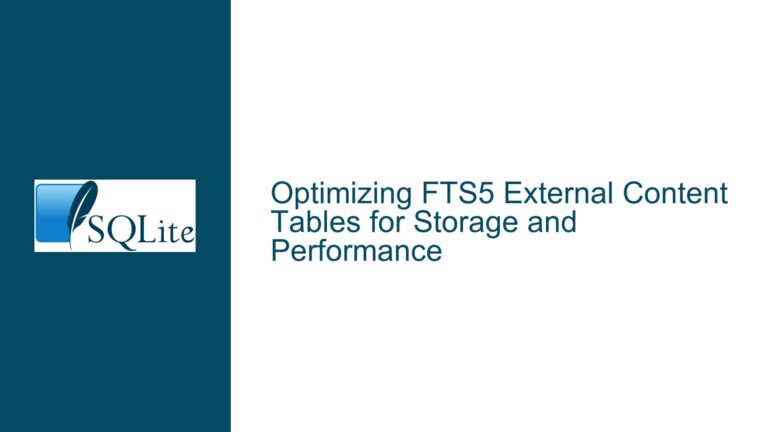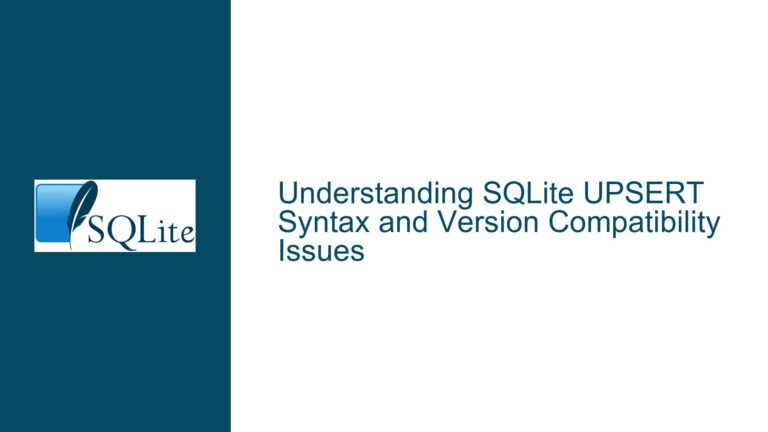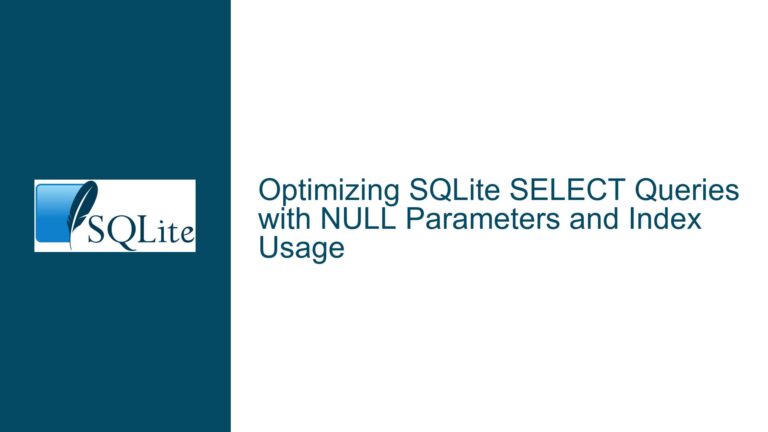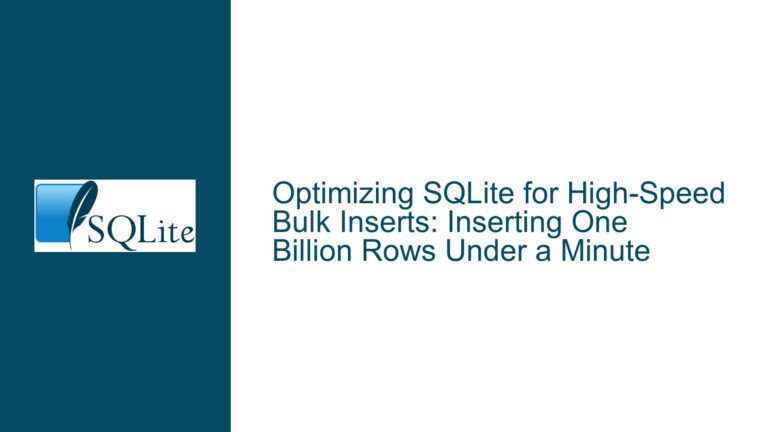Optimizing FTS5 External Content Tables for Storage and Performance
Understanding FTS5 External Content Tables and Their Role in SQLite Full-Text Search (FTS) in SQLite is a powerful feature that allows for efficient text-based querying. FTS5, the latest version of this module, introduces several improvements over its predecessor, FTS3, including the concept of external content tables. These tables are designed to optimize both storage and…









